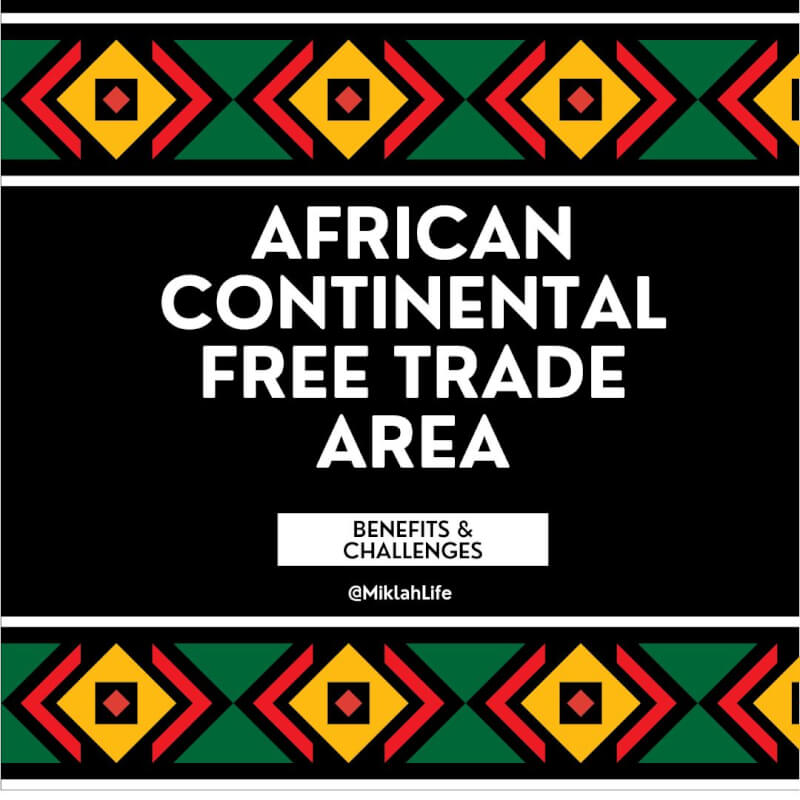The African Continental Free Trade Area (AfCFTA): Potential Benefits and Challenges of its Implementation to African Entrepreneurs!
Today’s reality (or close-to-reality) of the African Continental Free Trade Area (AfCFTA) is a testament to the common saying, ‘standing on the shoulders of giants’, which is often attributed to Isaac Newton, even though the original author was an English philosopher and theologian, John of Salisbury (Martin, 2023). Who knew that the 1963 efforts of the founding fathers (including our own, Dr. Milton Obote) of the Organization of African Union – OAU (African Union – AU, 2023) would birth something like the AfCFTA?
According to the official website of the African Union, AfCFTA is one of the fifteen flagship projects of The Africa Agenda 2063. Agenda 2063 is, in the exact words of the AU, the ‘Africa’s blueprint and master plan for transforming Africa into the global powerhouse of the future’. It is a 50-year roadmap the 55 African States endorsed during the Golden Jubilee (50 years) celebrations of the formation of the OAU /AU in May 2013 to guide Africa’s socioeconomic transformation from 2013 to 2063.
As an entrepreneur, I see the AfCFTA as a transformative force with the potential to unlock unprecedented opportunities for African enterprises. However, I also acknowledge that this won’t happen without setbacks. In this essay, I discuss the potential benefits and challenges of AfCFTA for entrepreneurs in Africa.
The Benefits and Challenges of AfCFTA to Entrepreneurs

For entrepreneurs, AfCFTA will avail a bigger and more diversified market. According to the Economic Commission for Africa – ECA, the AfCFTA will lead to a single market of 1.3 billion people across Africa, with a combined GDP of $3.4 trillion (ECA, 2020). This means a bigger customer base where entrepreneurs can sell their goods and services. Research by Kimuli and colleagues in Uganda has shown that Uganda’s entrepreneurship suffers from a small market, which limits the production and scaling up of businesses (Kimuli et al., 2021). As such, the report reads, businesses remain small for years and are less sustainable. Once implemented, AfCFTA will cure this.
Additionally, the AfCFTA shall eliminate longstanding trade barriers that have hindered regional trade. For example, on several occasions, Kenya has banned Uganda’s products from entering its market for various reasons. The AfCFTA has protocols regarding quality, hygiene, and production standards that will minimize these situations. With the AfCFTA and these barriers removed, African entrepreneurs will compete more equally, fostering a fairer and more dynamic marketplace.
The AfCFTA will foster innovation, growth, and quality improvements among entrepreneurs. Entrepreneurs can collaborate, compete, partner, share knowledge, resources, and expertise, and grow together. With improved entrepreneurship and market, socioeconomic growth will spill over into society.
As already highlighted, the benefits of AfCFTA won’t happen without some setbacks.
A key concern is the issue of unequal competition. For example, in an open and broader market, Ugandan businesses, particularly small and medium enterprises (SMEs), might find it challenging to compete with larger corporations from other African countries that have more resources and benefit from economies of scale.
Additionally, the success of the AfCFTA depends on the effective implementation of the agreement. Africa is generally home to corruption and poor leadership. These challenges will hinder the implementation of AfCFTA. Bureaucratic obstacles, complex customs procedures, and insufficient infrastructure can all obstruct the free movement of goods and services.
Conclusion on AfCFTA benefits and challenges

In conclusion, as a program that brings together 55 standalone states and 8 regional economic communities or blocks, the AfCFTA is, in the words of Maryla and colleagues at the World Bank, the ‘largest free trade area in the world measured by the number of countries participating’. According to these authors, AfCFTA can raise 30 million people out of extreme poverty and the incomes of 68 million others who live on less than $5.50 per day.
However, to achieve these numbers, Africans and their leaders would have to do most things differently, including putting up the required infrastructure, simplifying the bureaucracies, and attending to corruption which is chronic in most African countries.
It is then that African entrepreneurs and their nations shall reap the true benefits of the AfCFTA program.
References:
African Union. (2023). Founding Fathers. Organization of the African Unity at 60. https://oau60.au.int/en/founding-fathers
ECA. (2020). African Continental Free Trade Area (AfCFTA) to significantly increase traffic flows on all transport modes | United Nations Economic Commission for Africa. https://www.uneca.org/stories/african-continental-free-trade-area-%28afcfta%29-to-significantly-increase-traffic-flows-on-all
Kimuli, S., Sendawula, K., & Sabi, H. (2021). Sustainable entrepreneurship of small businesses in Uganda: A confirmatory factor analysis. African Journal of Business Management, 15, 139–151. https://doi.org/10.5897/AJBM2021.9207
Martin, G. (2023, December 11). Standing On The Shoulders Of Giants—Meaning & Origin Of The Phrase. https://www.phrases.org.uk/meanings/268025.html



